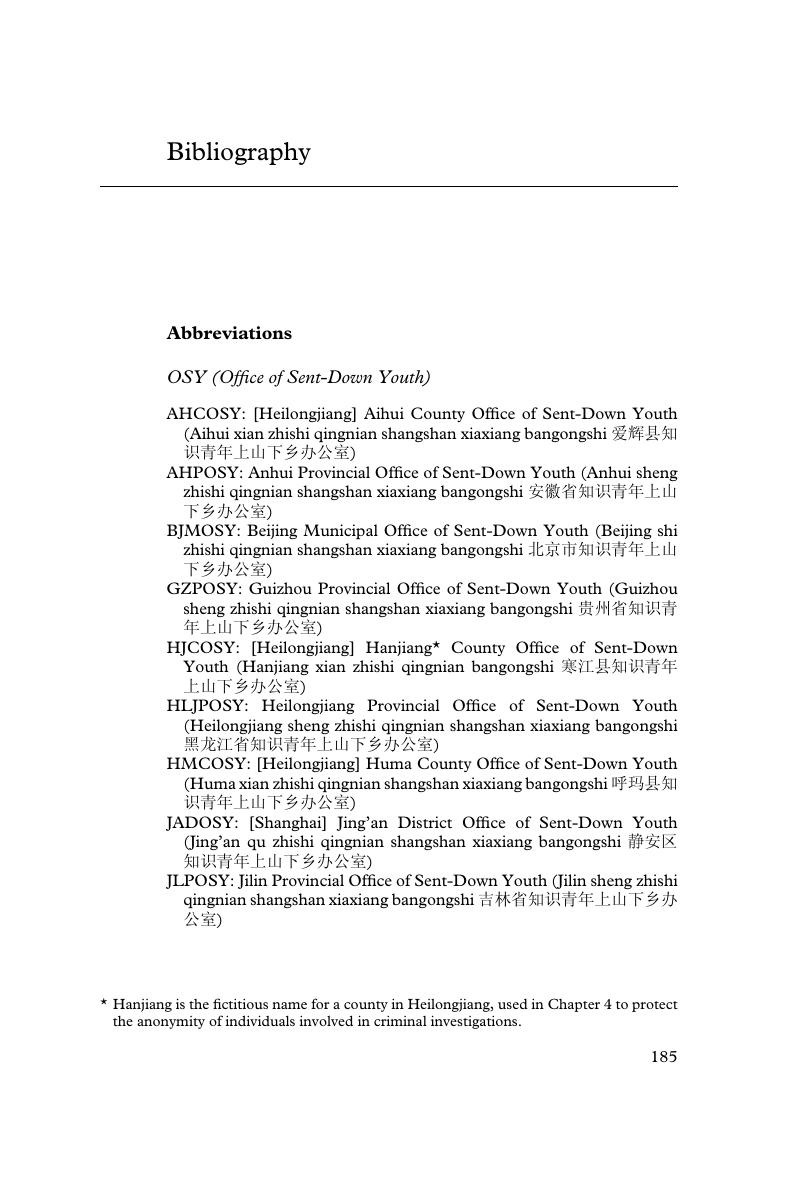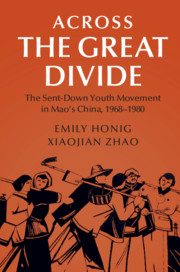Book contents
- Across the Great Divide
- Cambridge Studies in the History of the People’s Republic of China
- Across the Great Divide
- Copyright page
- Contents
- Illustrations
- Acknowledgments
- Stylistic Note
- Introduction
- 1 Farewell to the Huangpu River
- 2 Not All Quiet on the Rural Front
- 3 The Unplanned Economy
- 4 Inappropriate Intimacies
- 5 Urban Outposts in Rural China
- 6 Things Fall Apart
- 7 Epilogue
- Bibliography
- Glossary
- Index
- References
Bibliography
Published online by Cambridge University Press: 30 August 2019
- Across the Great Divide
- Cambridge Studies in the History of the People’s Republic of China
- Across the Great Divide
- Copyright page
- Contents
- Illustrations
- Acknowledgments
- Stylistic Note
- Introduction
- 1 Farewell to the Huangpu River
- 2 Not All Quiet on the Rural Front
- 3 The Unplanned Economy
- 4 Inappropriate Intimacies
- 5 Urban Outposts in Rural China
- 6 Things Fall Apart
- 7 Epilogue
- Bibliography
- Glossary
- Index
- References
Summary

- Type
- Chapter
- Information
- Across the Great DivideThe Sent-down Youth Movement in Mao's China, 1968–1980, pp. 185 - 202Publisher: Cambridge University PressPrint publication year: 2019



